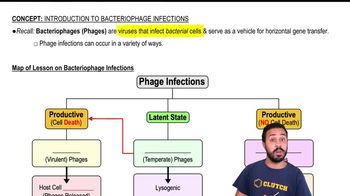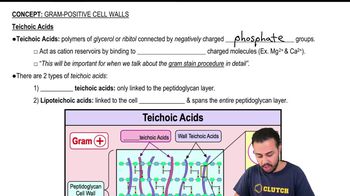Among hospital patients who have infections, one-third did not enter the hospital with the infection but rather acquired it in the hospital. How do they acquire these infections? What is the method of transmission of these infections? What is the reservoir of infection?
 Tortora 14th Edition
Tortora 14th Edition Ch. 14+15 - Principles of Disease and Epidemiology | Microbial Mechanisms of Pathogenicity
Ch. 14+15 - Principles of Disease and Epidemiology | Microbial Mechanisms of Pathogenicity Problem 14.5a
Problem 14.5aWhich one of the following diseases is not correctly matched to its reservoir?
a. influenza-animal
b. rabies-animal
c. botulism-nonliving
d. anthrax-nonliving
e. toxoplasmosis-cats
 Verified step by step guidance
Verified step by step guidance
Verified Solution
Key Concepts
Reservoirs of Infection

Zoonotic Diseases

Nonliving Reservoirs

Which of the following is not one of Koch's postulates?
a. The same pathogen must be present in every case of the disease.
b. The pathogen must be isolated and grown in pure culture from the diseased host.
c. The pathogen from pure culture must cause the disease when inoculated into a healthy, susceptible laboratory animal.
d. The disease must be transmitted from a diseased animal to a healthy, susceptible animal by direct contact.
e. The pathogen must be isolated in pure culture from an experimentally infected lab animal.
Distinguish symptoms from signs as signals of disease.
How can a local infection become a systemic infection?
Use the following information to answer questions 6–7.
On September 6, a 6-year-old boy experienced fever, chills, and vomiting. On September 7, the child was hospitalized with diarrhea and swollen lymph nodes under both arms. On September 3, he had been scratched and bitten by a cat. The cat was found dead on September 5, and Y. pestis was isolated from the cat. Chloramphenicol was administered to the child from September 7, when Y. pestis was isolated from his blood. On September 17, the child's temperature returned to normal. On September 22, the child was released from the hospital.
Identify the incubation period for this case of bubonic plague.
a. September 3-5
b. September 3-6
c. September 6-7
d. September 6-17
Why are some organisms that constitute the normal microbiota described as commensals, whereas others are described as mutualistic?